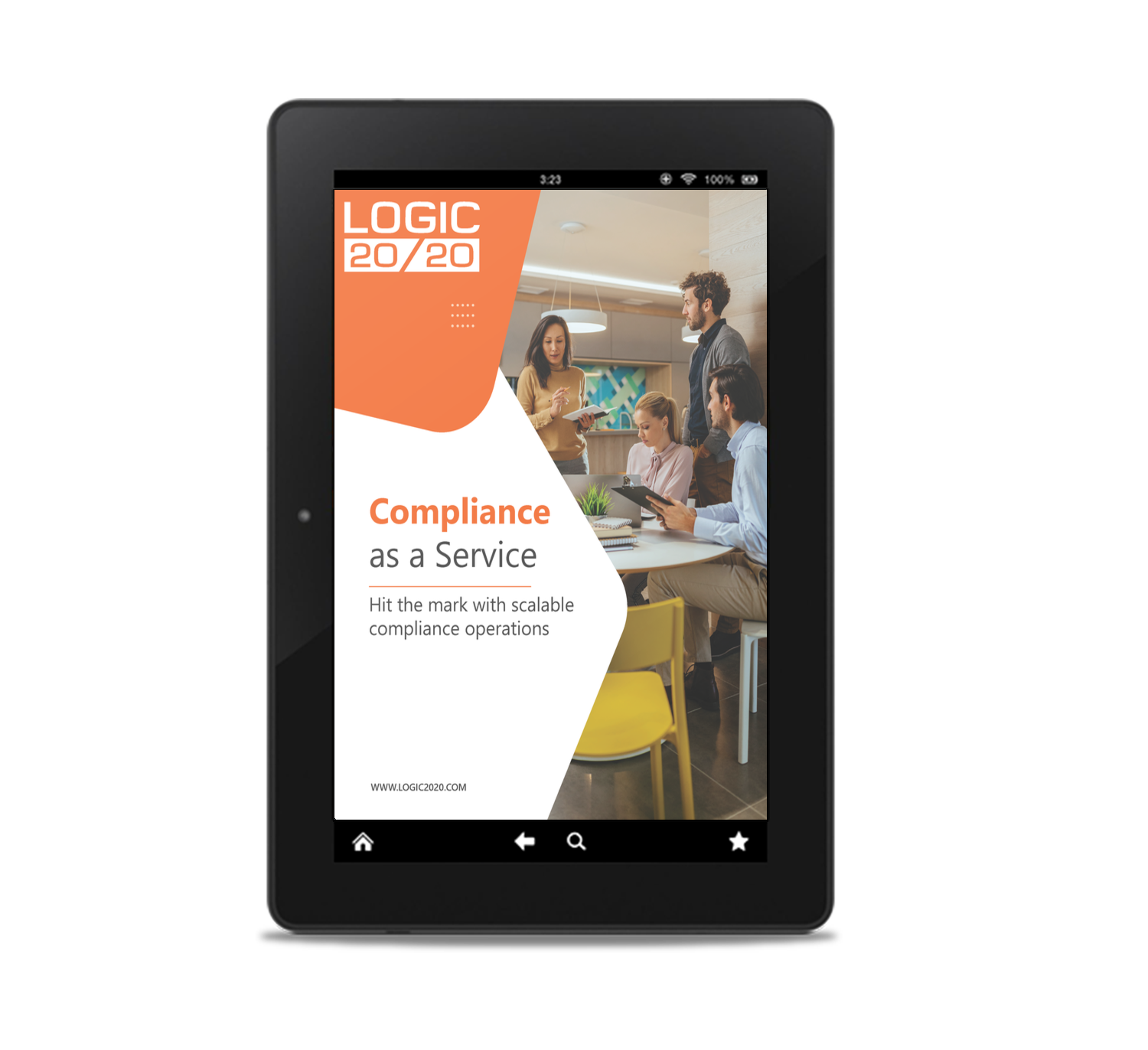6-minute read
Quick summary: Transforming compliance from a reactive necessity to a strategic asset drives innovation, reduces risk, and positions your organization for lasting success.
Compliance has always required a balancing act for businesses—ensuring adherence to regulations while managing operational efficiency. For many companies, this balance is elusive. They find themselves trapped in reactive cycles, addressing compliance issues only when violations or risks surface. This approach isn’t just inefficient; it’s costly.
Non-compliance with data privacy regulations costs organizations an average of $14.82 million—nearly three times the $5.47 million cost of implementing compliant frameworks. For violations under the California Consumer Privacy Act (CCPA), fines can reach $7,500 per incident, while breaches of the EU’s General Data Protection Regulation (GDPR) can incur penalties as high as 4 percent of the company’s global revenue.
These figures underscore a critical truth: Reactive compliance is not sustainable. In contrast, proactive compliance not only reduces the risk of violations, but also streamlines operations and builds trust with stakeholders. Proactive compliance offices anticipate regulatory shifts, manage risks effectively, and position compliance as a strategic enabler rather than a reactive burden.
In this article, we’ll explore practical strategies for evolving compliance offices into strategic, proactive entities. From leveraging data-driven tools to embedding compliance by design, these steps will help transform compliance from a reactive function into a dynamic competitive advantage.
Article continues below.

Compliance as a Service (CaaS) ebook
Get expert insights on how to hit the mark with scalable compliance operations.
We will never sell your data. View our privacy policy here.
From reaction to strategy: Transforming compliance into a business enabler
When teams react to issues as they arise, scrambling to patch holes and address immediate risks, compliance becomes a never-ending game of catch-up. While this approach may stave off short-term crises, it often creates long-term inefficiencies. The absence of a broader strategic framework leaves companies vulnerable to recurring compliance failures, operational disruptions, and reputational damage.
The reactive challenge: Inefficiency by design
Reactive compliance is inherently inefficient. Teams focused solely on responding to immediate issues often work in silos, leading to fragmented processes and inconsistent execution. Without integration into broader business workflows, compliance efforts become disjointed, duplicative, and prone to gaps. The results: heightened risks, wasted resources, and a lack of alignment with organizational objectives.
To move beyond this reactive state, organizations must rethink how they approach compliance—not as a series of ad hoc actions, but as a strategic, embedded function that supports efficient operations while reducing risk.
Building strategic foundations: Laying the groundwork for success
The path to strategic compliance begins with building a strong foundation—rethinking compliance as a proactive, integrated effort that supports the organization’s goals. Here are four steps for getting started:
1. Vision with leadership backing
A strong, clearly articulated vision for compliance sets the tone for the entire organization. When leadership actively supports and champions this vision, it signals the importance of compliance as a strategic priority.
2. Embed compliance into daily operations
Adopting a “compliance by design” approach ensures that compliance principles are built into operational processes, not added as an afterthought. By integrating compliance into workflows, organizations can address issues at their root and prevent risks before they escalate.
3. Focus on prevention, not reaction
Proactive compliance measures—such as automated monitoring tools, training programs, and cross-departmental collaboration—help organizations identify and mitigate risks early, shifting the focus from damage control to risk mitigation.
4. Create a clear compliance roadmap
A roadmap charts the path from reactive fire-fighting to proactive planning. Begin by assessing the current state, identifying gaps, and defining clear objectives for the future. A well-designed roadmap ensures that every step is purposeful and aligned with organizational goals.
5. Leverage compliance scorecards for alignment
Compliance scorecards are invaluable tools for translating strategy into action. By defining metrics, tracking progress, and identifying priority areas, these resources provide a visual framework to guide teams in their compliance journeys. They also help align stakeholders on key goals, fostering collaboration and simplifying implementation.
Managing risk with data-driven tools: Turning insights into action
Compliance risks can seem like a moving target, with new regulations, evolving business needs, and operational gaps adding layers of complexity. To stay ahead, organizations must move beyond intuition and manual tracking to adopt data-driven tools that provide clarity, visibility, and actionable insights.
Utilize dashboards and analytics: Bringing compliance data into focus
Dashboards and analytics are indispensable for modern compliance management, aggregating complex data into an accessible, visual format to help organizations understand their risk landscape at a glance.
Track regulatory developments and compliance progress: Dashboards centralize information about current and emerging regulations, providing a clear view of organizational alignment with these requirements. Teams can easily monitor compliance progress and identify gaps that require immediate attention.
Enable real-time decision-making: By providing real-time visibility into risk areas, dashboards empower compliance offices to respond quickly to potential issues. Cross-departmental insights ensure that decisions are informed by the latest data, reducing blind spots and fostering accountability across the organization.
Focus on high-impact areas: Prioritize where it matters most
Not all risks are created equal. Some carry more significant potential for financial, reputational, and operational harm. Data-driven tools allow organizations to prioritize their resources effectively, focusing on the most critical areas.
Concentrate resources on significant risks: Scorecards and risk indexes help compliance offices rank risks by severity and impact. This prioritization ensures that resources are allocated where they will have the greatest effect, reducing vulnerabilities in key areas.
Generate actionable insights for leadership: Robust data analysis translates complex compliance metrics into clear, actionable insights. Leadership can use these insights to guide resource allocation, shape strategy, and build stronger risk management frameworks.
Forecast and optimize resource needs: Data visualizations, such as heatmaps and trend charts, make it easier to predict future compliance needs. These tools allow teams to anticipate resource demands, avoid bottlenecks, and improve operational efficiency.
Providing advisory support for enterprise alignment: Integrating compliance seamlessly
Compliance is not a one-department responsibility; it requires coordination across the entire organization. By embedding strategic guidance into daily workflows and creating tools that empower teams, businesses can transform from an isolated function into a seamless component of enterprise operations.
Integrate strategic guidance into workflows
One of the most effective ways to align compliance efforts with broader organizational goals is by embedding advisory support into the processes employees use every day. This approach makes compliance intuitive, accessible, and proactive.
Leverage self-service tools: Tools like detailed, well-indexed documentation, chatbots, and automated portals equip employees with the knowledge and guidance they need to make compliance-conscious decisions in real-time. For example, a chatbot can provide quick answers to questions about regulatory requirements, reducing dependency on compliance offices for routine queries.
Embed compliance into product lifecycles: Integrating checkpoints into product design and development workflows ensures compliance considerations are addressed early. This proactive approach minimizes the need for costly rework and helps teams align with regulatory standards from the outset.
Specific deliverables that drive adherence include:
- Intake portals: Centralized platforms where teams can submit compliance-related queries or requests, ensuring easy access to expert guidance
- Feedback loops: Mechanisms for continuous monitoring and improvement, allowing compliance offices to gather insights on operational adherence and provide timely updates to teams
Prepare for regulatory changes
Regulations are in constant flux, and staying ahead of them requires vigilance and agility. Compliance offices must position themselves as trusted advisors who proactively guide the organization through evolving requirements.
Monitor legislative trends: Keeping a pulse on state, federal and global regulatory developments enables teams to anticipate and prepare for new compliance obligations before they take effect. Regular updates ensure the organization remains agile in the face of change.
Develop flexible frameworks: Adaptive compliance frameworks allow organizations to respond quickly to new or amended regulations without overhauling existing processes. These frameworks can be tailored to accommodate shifting demands, ensuring sustained alignment with legal standards.
Centralize regulatory updates: Dashboards can consolidate information about regulatory changes, making it easier for leadership and teams to track updates and adjust workflows proactively. This centralized approach reduces confusion and fosters collaboration across departments.
The role of Compliance as a Service: Elevating strategy through operational efficiency
As compliance grows more complex, many organizations struggle to balance day-to-day tasks with long-term strategy. Compliance as a Service (CaaS) offers a solution, enabling organizations to delegate operational burdens to external experts while focusing internal resources on high-value initiatives. This hybrid approach not only ensures compliance, but also enhances organizational agility and maturity.
Operationalizing compliance tasks: Focus where it matters most
Compliance offices often find themselves consumed by routine tasks, leaving little time to address strategic priorities. By outsourcing these operational responsibilities to a CaaS provider, organizations can alleviate internal pressure and redirect resources toward activities that drive value.
Delegate daily compliance operations: A CaaS provider takes on repetitive tasks, such as monitoring regulatory updates, managing documentation, and responding to compliance queries. This delegation frees internal teams to concentrate on more strategic initiatives, reducing burnout and inefficiencies.
Refocus internal resources on strategy: With day-to-day tasks handled externally, compliance offices can prioritize governance alignment, risk mitigation, and advisory support. This shift helps position compliance as a strategic enabler rather than a reactive burden.
Building future-ready frameworks: A foundation for continuous improvement
Compliance isn’t static; it evolves alongside regulations, technology, and business needs. A CaaS provider brings the expertise and tools to help organizations stay ahead, creating systems that are scalable, flexible, and efficient.
Efficient adaptation to evolving regulations: CaaS providers monitor regulatory changes and operationalize new requirements into existing frameworks, ensuring organizations remain compliant without disruptions to operations.
Streamline workflows to enhance compliance maturity: CaaS teams work with organizations to optimize processes, reducing redundancies and increasing transparency. Systems such as centralized dashboards and automated workflows simplify compliance management while improving accountability.
Drive continuous improvement through targeted initiatives: Initiatives like tooling enhancements and scalable dashboards enable organizations to address specific compliance challenges effectively. These targeted solutions improve efficiency and ensure that compliance evolves in step with business goals.
Case study: Transforming data privacy compliance
A large enterprise was facing significant challenges with its data privacy compliance function, operating in a predominantly reactive state. Overwhelmed by daily tasks and burdened by inefficient processes, the team struggled to manage the volume of compliance requirements effectively. A lack of strategic oversight and fragmented workflows further compounded operational inefficiencies, leaving the organization vulnerable to risks.
To address these challenges, the organization embraced a comprehensive transformation. They adopted compliance-by-design principles, embedding best practices into everyday workflows. Leveraging dashboards and risk indexes, the team identified and prioritized key risks, focusing resources where they were most needed.
Compliance scorecards further streamlined efforts, ensuring high-risk areas received appropriate attention. To alleviate the operational burden, day-to-day compliance tasks were delegated to a CaaS team, freeing internal resources to concentrate on strategic initiatives.
Reimagining compliance for the future
Compliance goes beyond meeting regulations—it’s a tool for building trust, streamlining operations, and ensuring resilience in a shifting landscape. Organizations that embrace compliance as a strategic enabler unlock new opportunities to innovate, reduce risk, and build lasting competitive advantages.
The future of compliance belongs to those who act decisively, transforming their approach to meet the demands of an ever-changing world. By leveraging tools, frameworks, and forward-thinking strategies, businesses can turn compliance into a cornerstone of operational excellence and strategic growth.

Streamline compliance with expert guidance
- Compliance managed services
- Compliance process optimization
- Regulatory response readiness
- Compliance automation


